Nestled in the heart of Umbria in central Italy, Spoleto captivates visitors with its remarkable blend of medieval charm and Roman history. I fell in love with this “City of a Hundred Towers” during my first visit. The iconic Ponte delle Torri (Bridge of Towers) came into view against the lush Umbrian landscape. This impressive 230-meter-long, 80-meter-high limestone structure not only connects Sant’Elia hill to Monteluco but also represents the fascinating defensive system that has protected historic Spoleto for centuries.
Walking through Spoleto’s old town feels like stepping through pages of Italian history. The city’s unique architecture tells stories of its strategic importance, from the imposing Fortress of Albornoz to the mysterious Ponte Sanguinario (Bloody Bridge) you’ll pass on your way to the historic center. My favorite morning ritual while staying here was grabbing an espresso and watching the sunrise cast golden light across these ancient structures.
The bridges of Spoleto served practical purposes beyond mere transportation. They were critical defensive elements and water transport systems. As I explored the passages connecting the city’s fortresses, I discovered how ingeniously these structures united form and function. The engineering marvel of connecting the main fortress to the Mulini fort while simultaneously creating a water transport system shows the brilliant planning that went into building this medieval jewel of Umbria.
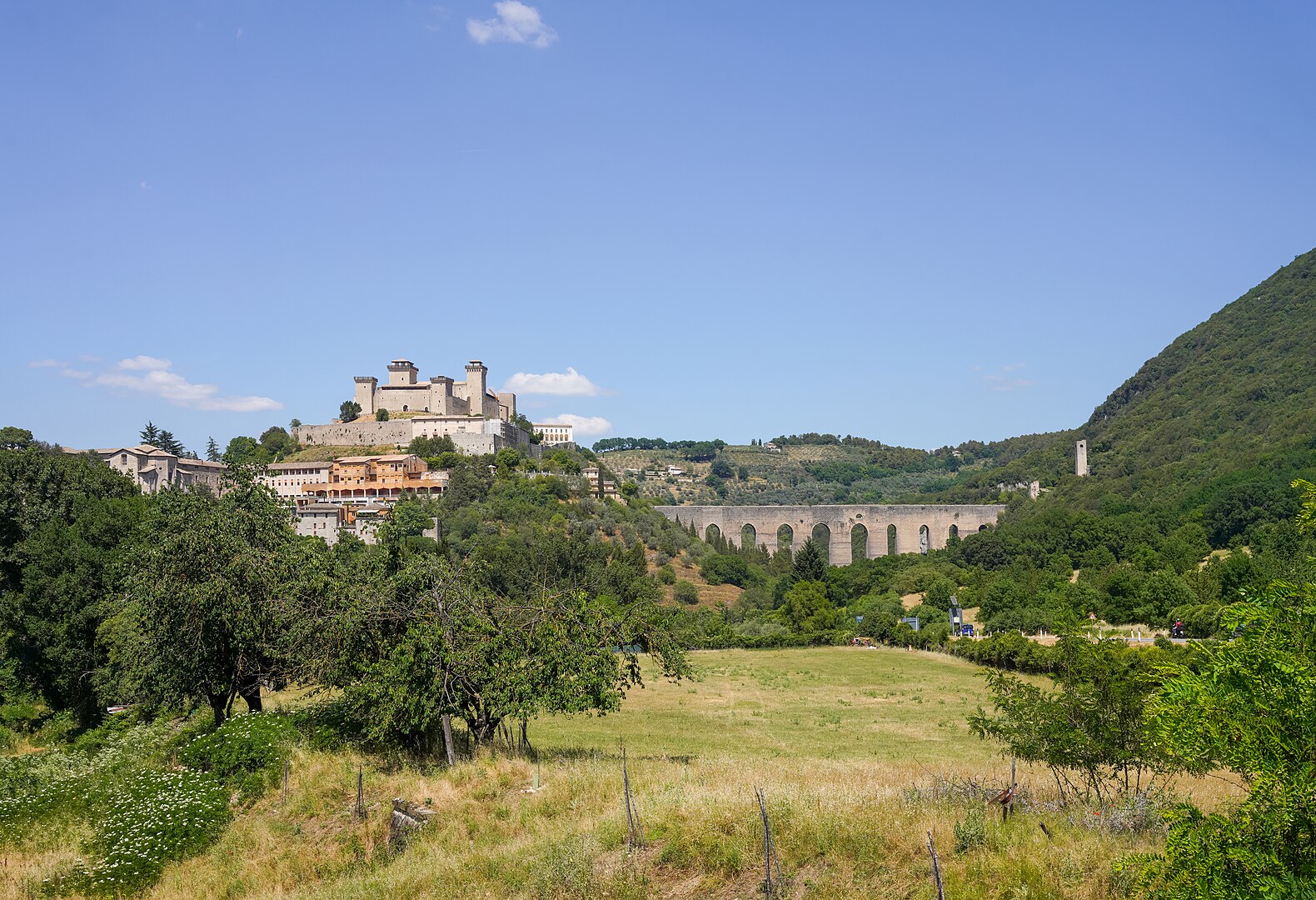
The History of Spoleto
Spoleto holds a rich tapestry of history spanning from ancient Roman times through medieval splendor to modern significance. The town’s strategic position in central Italy made it crucial throughout different periods, with each era leaving distinctive marks on its architecture and culture.
Roman Beginnings to the Lombard Rule
Spoleto’s story begins with the Romans, who colonized the area around 241 BCE. They transformed it into a thriving settlement with impressive engineering marvels. The Roman theatre, still visible today, dates back to the 1st century AD and showcases their architectural prowess.
During this period, Emperor Augustus commissioned improvements to the Via Flaminia, including what would become one of Spoleto’s most famous structures – a magnificent bridge spanning the valley.
After Rome’s fall, Spoleto faced waves of invaders. The Lombards (also known as Longobards) arrived in the 6th century and made the most significant impact. They established their presence in Italy with Spoleto as one of their most important centers.
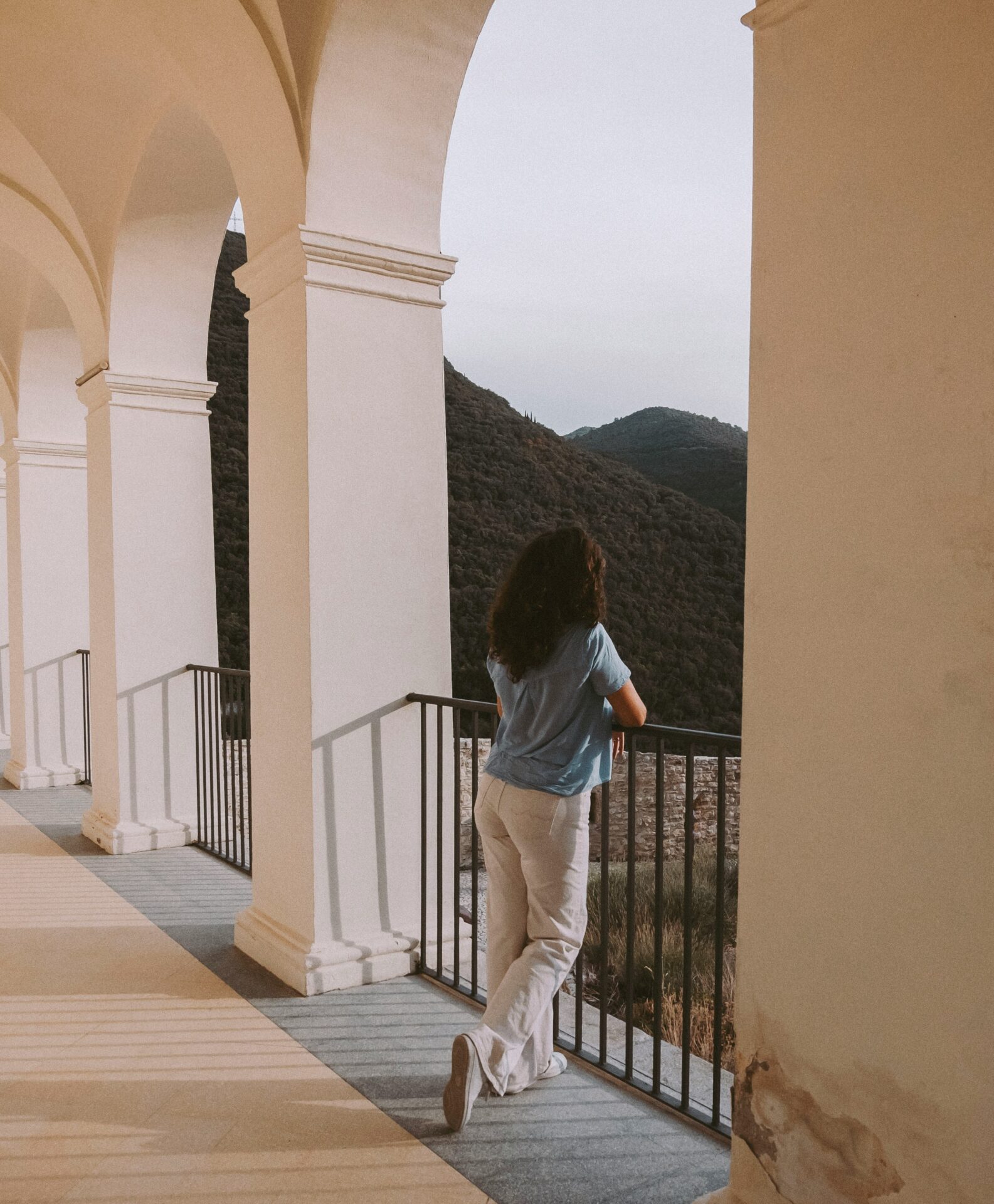
Duchy of Spoleto and Its Legacy
The Lombards created the Duchy of Spoleto around 570 CE, establishing one of the most powerful independent states in early medieval Italy. This duchy controlled vast territories and became a major political force.
During my explorations of Spoleto, I noticed how the Longobard influence remains visible in many structures. Their architectural style blended with existing Roman elements to create unique buildings.
The duchy’s power was evident in its ability to resist external pressures. At times, it operated almost like an independent kingdom. The dukes of Spoleto wielded enormous influence, often challenging both the Lombard kings and neighboring powers.
This period saw the construction of formidable fortifications that still dominate Spoleto’s skyline. The duchy’s legacy continues today with Spoleto being recognized in UNESCO’s “Longobards in Italy” World Heritage sites.
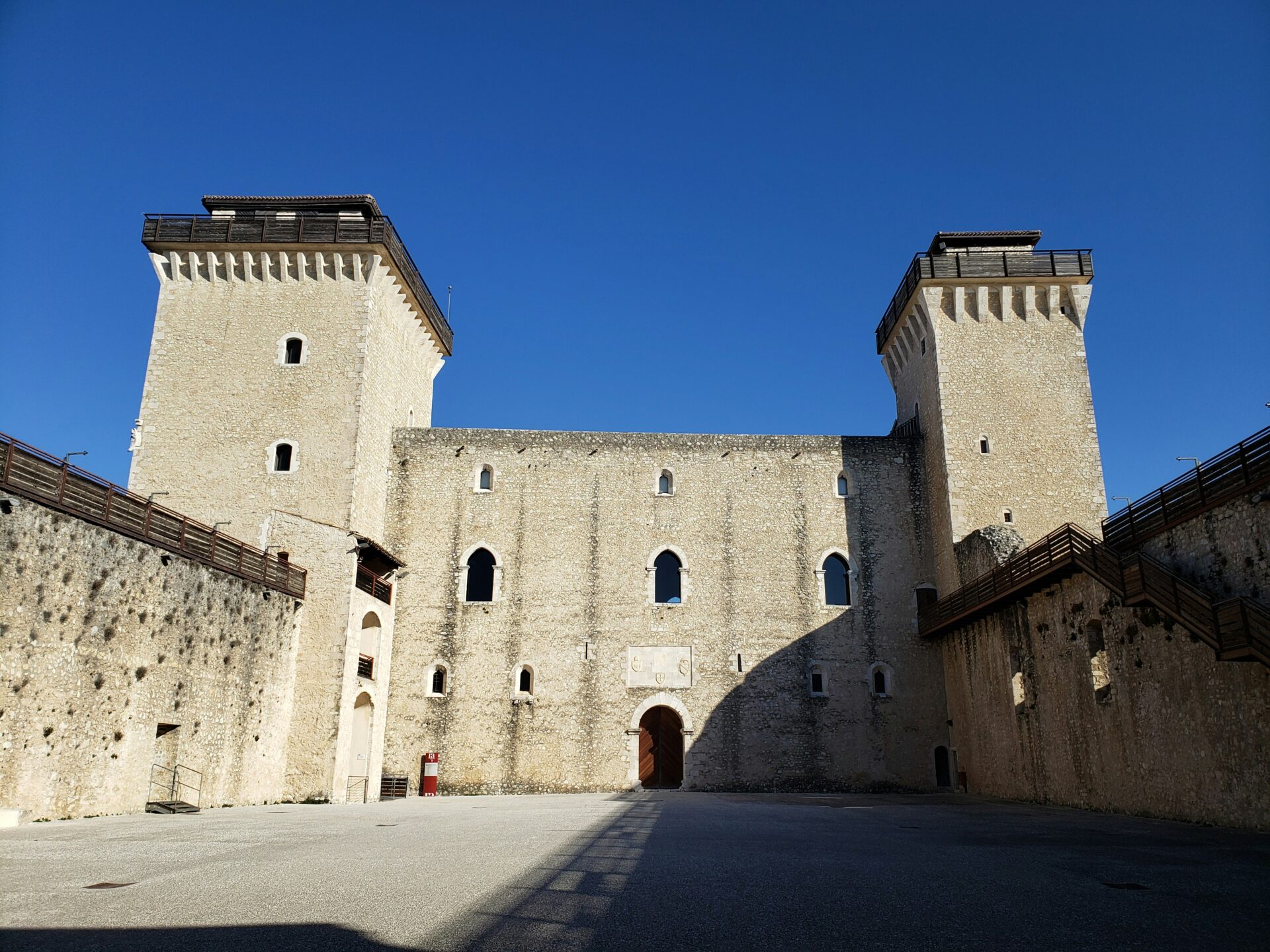
The Influence of the Papal States and Charlemagne
Charlemagne’s conquest of the Lombard Kingdom in 774 CE marked a turning point for Spoleto. He initially maintained the duchy but gradually brought it under Frankish control.
The town later fell under the influence of the Papal States, beginning a long relationship with Rome. This period saw significant religious construction, with churches and monasteries dotting the landscape.
I’ve always been fascinated by how Spoleto’s cathedral reflects this era. Built during the 12th century, it shows the growing power of the Church in the region.
The Papal influence continued for centuries, shaping Spoleto’s development and culture. Religious festivals and traditions from this period still play a central role in local life today.

Architectural Marvels of Spoleto
Spoleto’s skyline is dominated by incredible structures that span nearly two thousand years of history. These architectural treasures showcase the town’s importance throughout Roman times, the Middle Ages, and the Renaissance period.
The Majestic Rocca Albornoziana
I was awestruck when I first spotted the imposing Rocca Albornoziana fortress perched on Sant’Elia hill. Built between 1359 and 1370, this formidable structure was commissioned by Cardinal Albornoz to strengthen papal control in the region.
The fortress features six massive towers and two distinct courtyards – the Courtyard of Arms and the Courtyard of Honor. What fascinated me most was how the fortress combines military functionality with artistic elements, especially in the frescoed halls inside.
Today, the Rocca houses the National Museum of the Duchy of Spoleto, showcasing artifacts from the powerful dukes who once ruled here. The panoramic views from its walls are absolutely breathtaking, offering a perfect photo opportunity of the entire valley below.
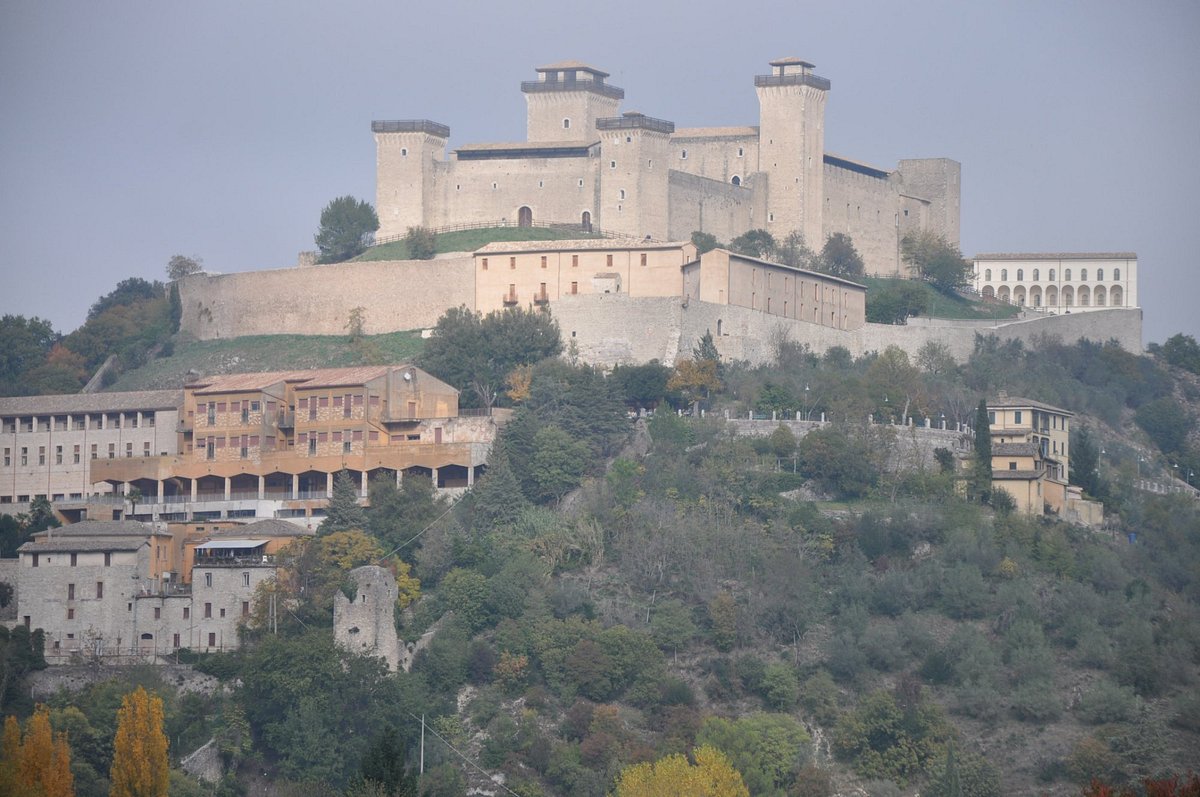
Cathedral of Santa Maria Assunta
The Duomo of Spoleto took my breath away with its magnificent Romanesque façade. Built in the 12th century, this cathedral stands as one of Umbria’s most impressive religious monuments.
Inside, I was captivated by the Renaissance frescoes by Filippo Lippi, particularly the scenes from the life of the Virgin Mary in the apse. The marble floor patterns and ornate chapels reflect centuries of artistic contributions.
What makes this cathedral special is how it evolved over time. The original Romanesque structure was later enhanced with Gothic and Renaissance elements. Don’t miss the Byzantine-style mosaics on the façade and the remarkable rose window that filters light into the nave.
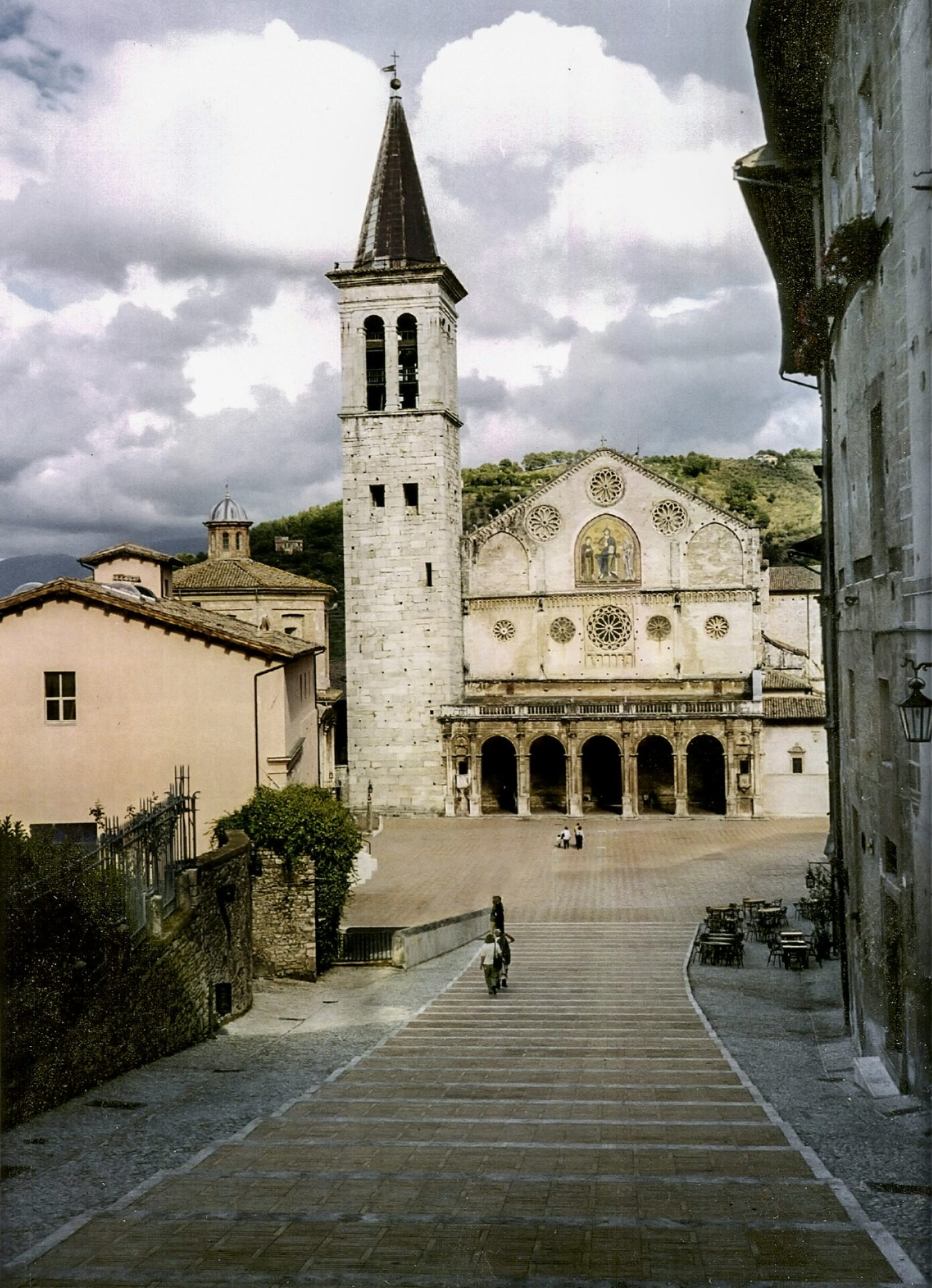
Basilica di San Salvatore and Longobard Heritage
I was fascinated to learn that the Basilica of San Salvatore is a UNESCO World Heritage site. Dating back to the 4th-5th centuries, this ancient church represents one of Italy’s most important examples of early Christian architecture.
What struck me most were the reused Roman columns and capitals throughout the basilica, creating a unique blend of pagan and Christian elements. The Longobards, who ruled Spoleto as dukes from the 6th to 8th centuries, added their own architectural influences.
The simple exterior hides an extraordinary interior with three naves and remarkable architectural details. I recommend visiting early morning when the light perfectly illuminates the ancient stonework. The adjacent Monumental Civic Cemetery is also worth exploring for its historical significance.
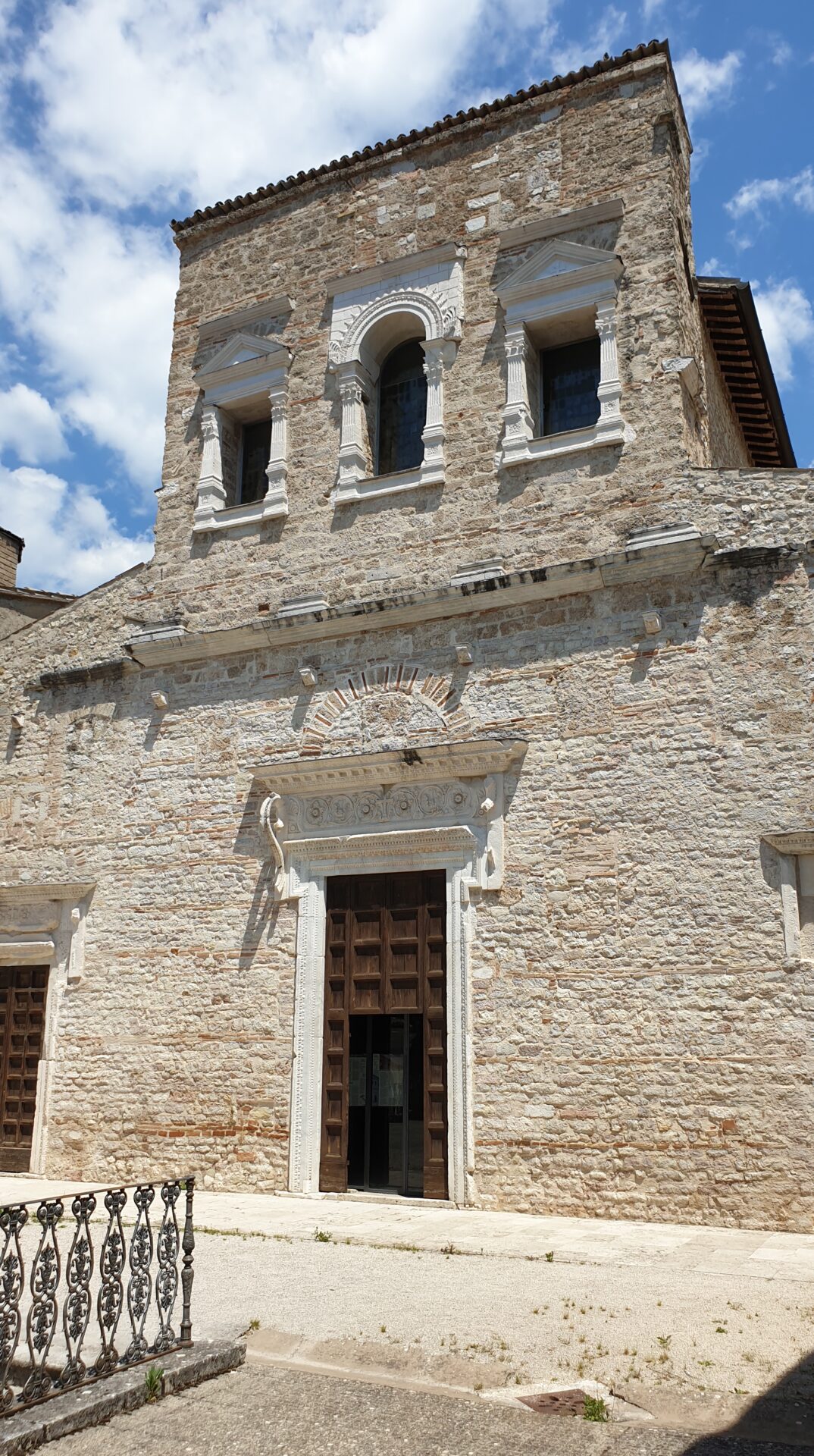
Ponte delle Torri and the Aqueduct
Walking across the breathtaking Ponte delle Torri (Bridge of Towers) was the highlight of my visit to Spoleto. This 13th-century bridge-aqueduct spans 230 meters across a deep gorge at a height of 82 meters.
Ten massive stone pillars support its graceful arches. The bridge served both as a water conduit and as part of the city’s defensive system, connecting the town to Monteluco mountain. The views from the middle of the bridge are simply spectacular.
What many visitors don’t realize is that the bridge was built on the foundations of a Roman aqueduct. I suggest timing your visit for late afternoon when the golden sunlight creates dramatic shadows across the ancient stonework. The path leading to and from the bridge offers excellent hiking opportunities through the surrounding woodland.
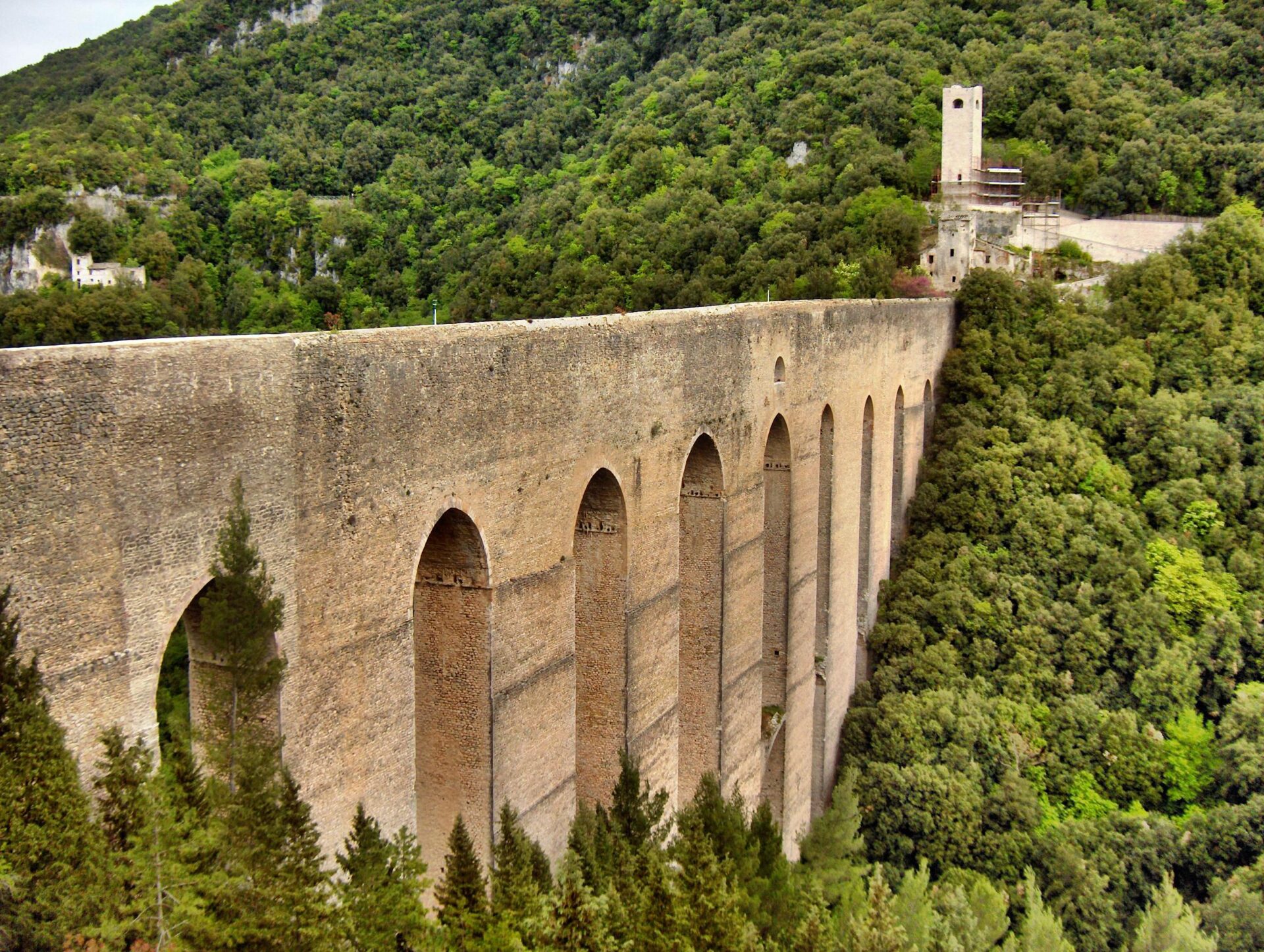
Cultural Tapestry of Spoleto
Spoleto’s rich cultural landscape blends centuries of artistic tradition with modern creative expression. The city pulses with artistic energy throughout the year while preserving its historical treasures.
Festival Dei Due Mondi’s International Flair
I’ve visited Spoleto multiple times, but nothing compares to experiencing the Festival dei Due Mondi (Festival of Two Worlds). This world-renowned event transforms the city each summer into a vibrant celebration of arts and culture.
Founded in 1958 by composer Gian Carlo Menotti, the festival brings together dance, music, theater, and visual arts from around the globe. I was amazed by performances held in historic venues throughout the city – from operas in the Roman Theater to concerts in medieval churches.
What makes this festival special is how it uses Spoleto’s historic buildings as natural stages. The entire city becomes part of the performance! Artists and visitors from every continent create a unique international atmosphere that you won’t find elsewhere in Umbria.
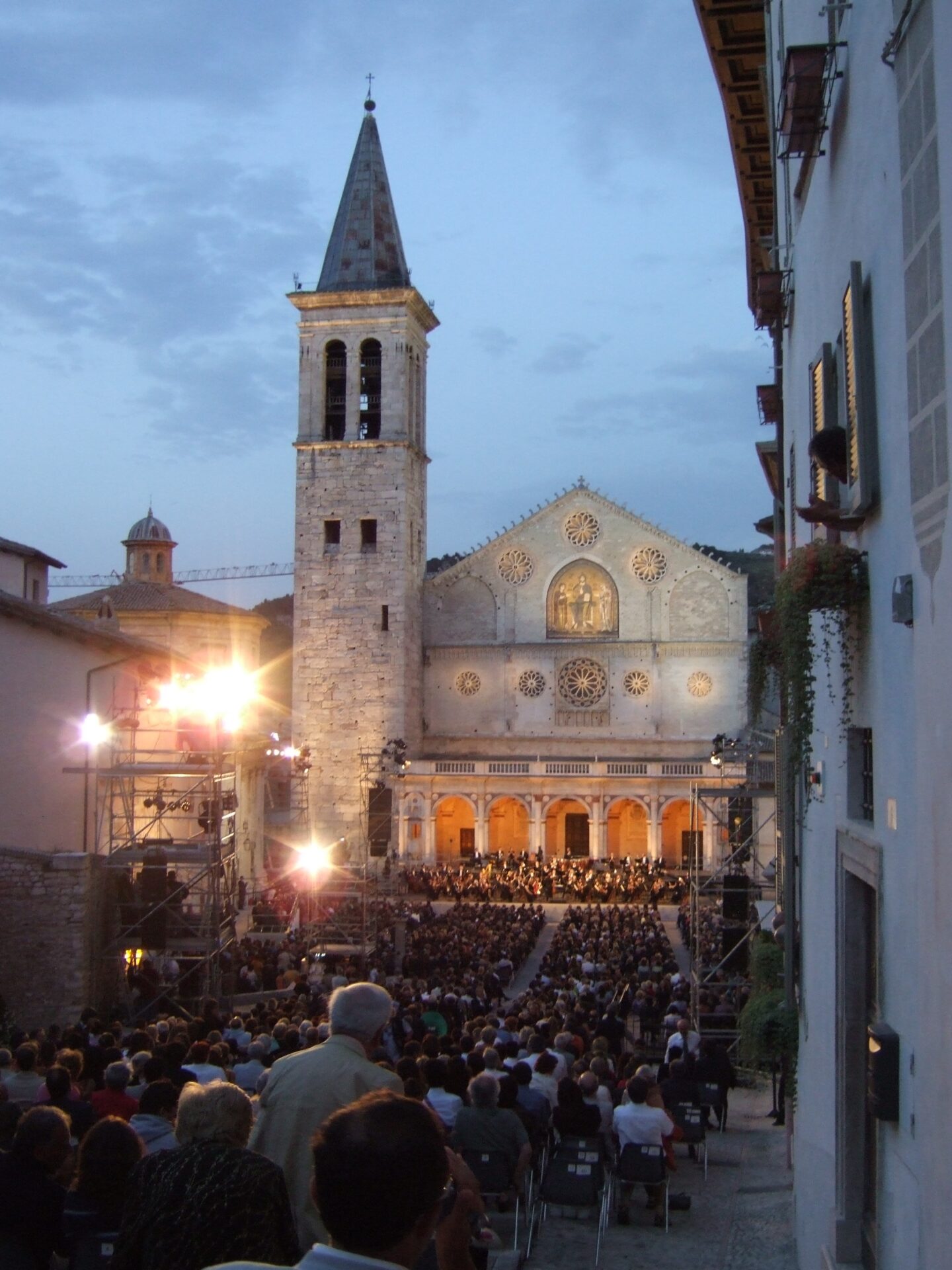
Museums and Artistic Wealth
The museums in Spoleto showcase its impressive artistic heritage. My favorite is the National Archaeological Museum, housed in a former monastery, displaying Umbrian and Roman artifacts that tell the story of the region’s ancient past.
The Diocesan Museum holds religious art treasures including paintings, sculptures, and intricate textiles. I spent hours admiring works by artists like Filippino Lippi.
For contemporary art lovers, Palazzo Collicola houses the Modern Art Museum with an impressive collection of 20th-century works. The building itself is stunning – a noble residence with elegant rooms and frescoed ceilings.
Don’t miss the Casa Romana, where you can walk through a well-preserved Roman house with original mosaics intact!
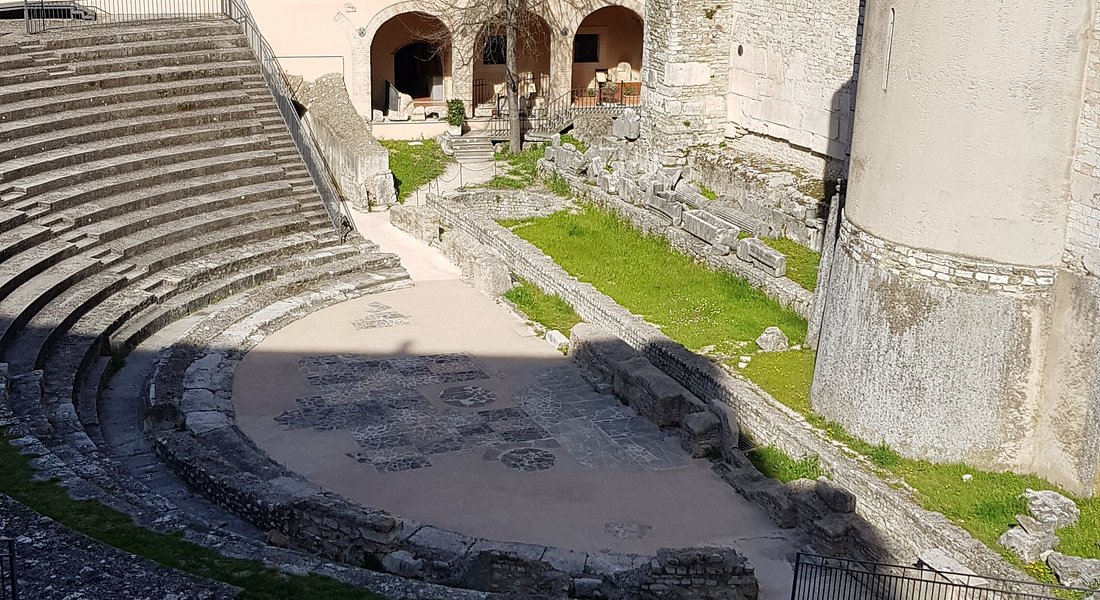
Historic Center and Piazza del Duomo
Wandering through Spoleto’s historic center feels like stepping back in time. Narrow medieval streets open suddenly into charming piazzas where locals gather at outdoor cafés.
The heart of Spoleto is Piazza del Duomo, dominated by the magnificent 12th-century Cathedral. I was stunned by the cathedral’s façade with its beautiful rose window and mosaic decorations.
Inside, the cathedral houses remarkable frescoes by Filippo Lippi, including his masterpiece in the apse. The piazza comes alive during festival season, but I prefer visiting in quieter months when you can fully appreciate its peaceful beauty.
Nearby, Piazza della Libertà showcases the city’s Roman heritage with its archaeological remains. This is where I start my walking tours, as it provides perfect context for understanding how Spoleto evolved through different historical periods.
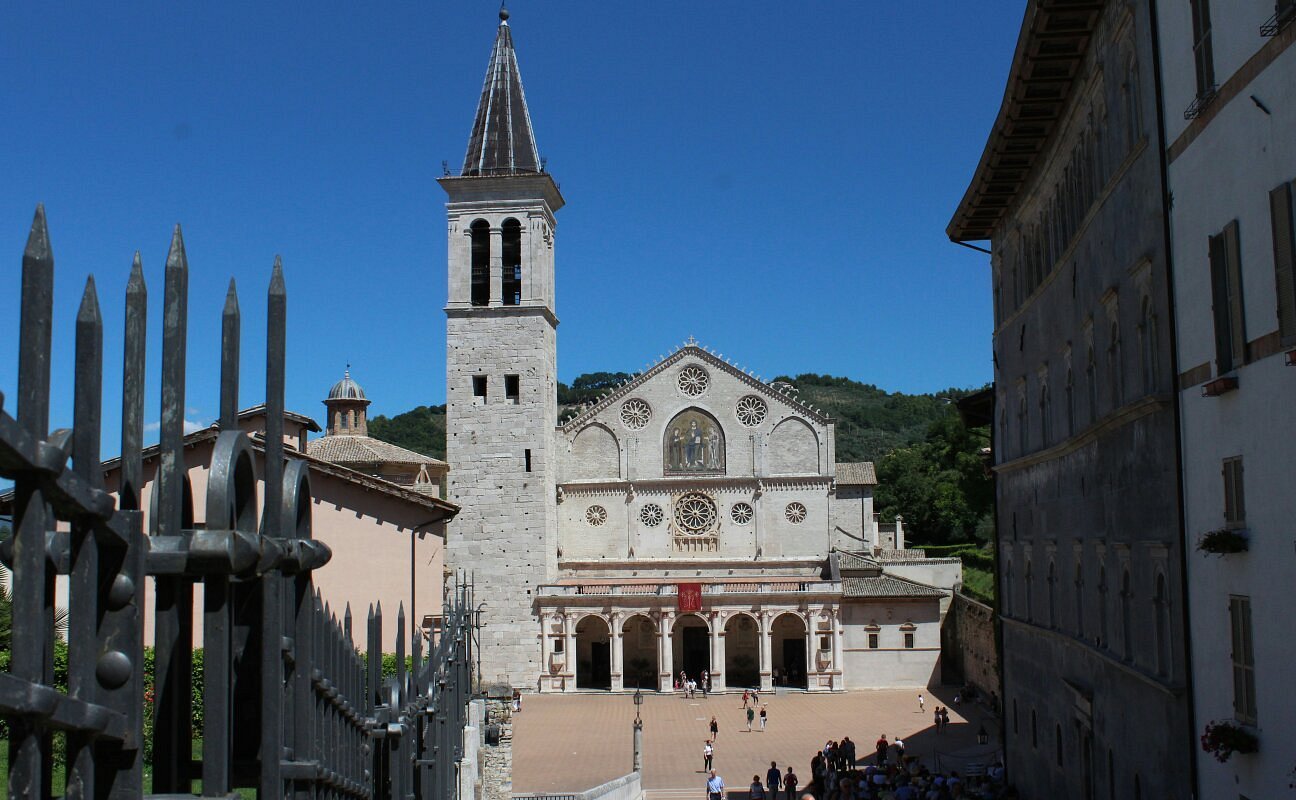
The Urban Landscape and Daily Life
Spoleto’s cityscape offers a fascinating blend of Roman history and medieval character, with distinct neighborhoods connected by a network of pathways and modern conveniences. The city’s layout creates unique experiences at every turn.
Upper Town and Lower Town: A Tale of Two Cities
Wandering through Spoleto, I immediately noticed how the city divides naturally into two distinct sections. The Upper Town perches dramatically on the hillside, dominated by the impressive Rocca Albornoziana fortress. Its narrow, winding streets offer breathtaking views of the surrounding Umbrian landscape.
The Lower Town feels more bustling and modern, yet still retains its historic charm. For visitors like me, the city’s system of escalators was a welcome discovery! These practical moving staircases connect the two areas, making it much easier to explore without exhausting climbs.
I found Piazza Garibaldi to be the perfect dividing line between these two worlds. This lovely square serves as both a gathering place and a natural transition point.
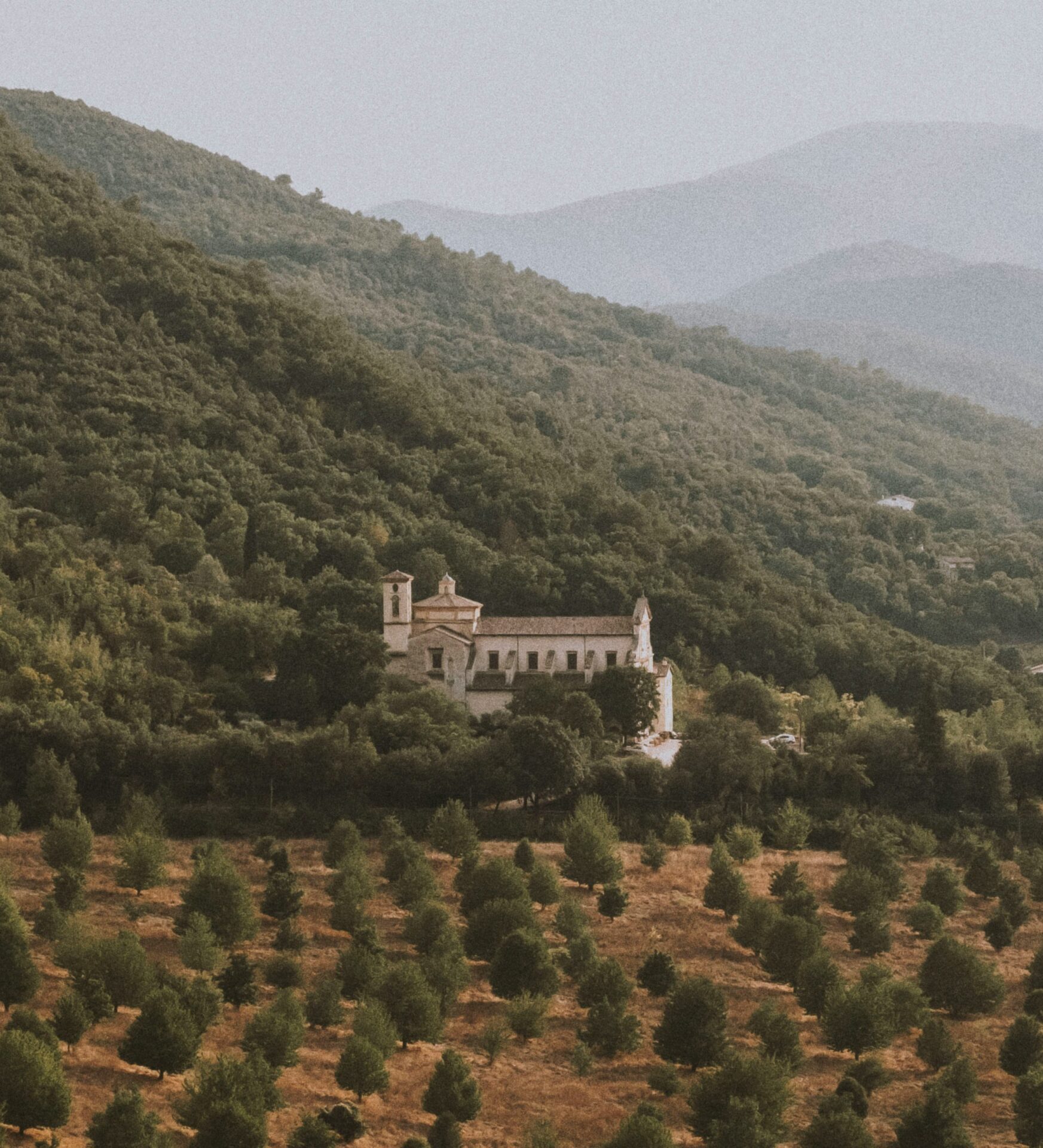
Corso Mazzini: The Buzzing Artery of Spoleto
Corso Mazzini pulses as Spoleto’s main thoroughfare, lined with shops, cafés, and historic buildings. Walking this street, I felt the heartbeat of local life unfolding around me.
Mornings here are particularly magical. Locals exchange greetings while picking up fresh bread, and café owners arrange outdoor tables. By afternoon, the pace quickens as both tourists and residents fill the street.
Many historic buildings along Corso Mazzini now host boutiques and restaurants, but their ancient facades tell stories of centuries past. I loved how medieval architectural details exist alongside modern shop displays.
The street serves as the perfect starting point for exploration. Many of the city’s main attractions are just a short walk from this central artery.
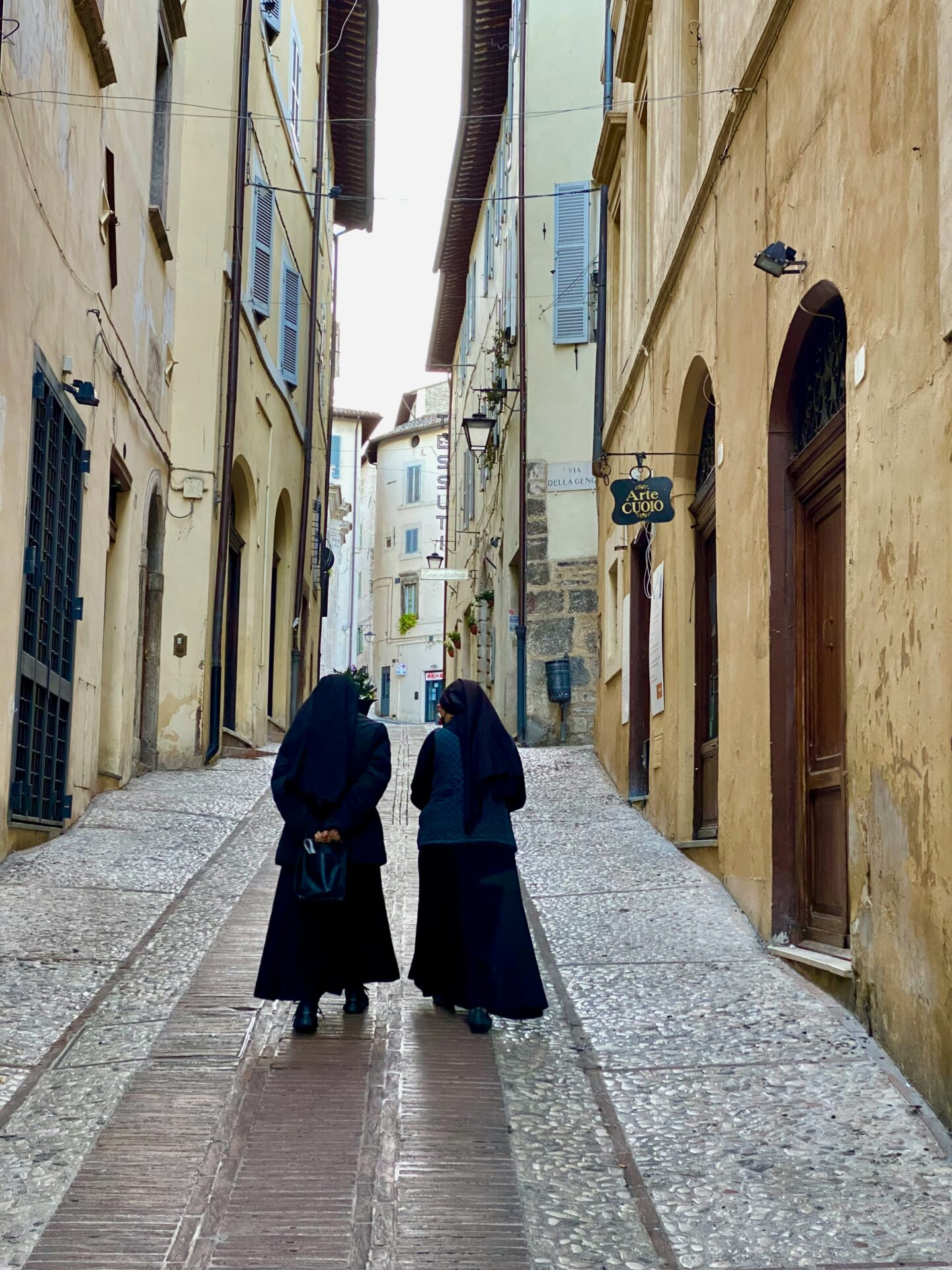
Piazza del Mercato and Local Commerce
Piazza del Mercato transported me back through time. This charming square has been Spoleto’s commercial center since Roman days, with remnants of the Roman amphitheater visible nearby.
Market days transform the piazza into a colorful tapestry of local life. Vendors sell everything from locally produced olive oils and wines to handcrafted souvenirs. The sounds of friendly bargaining fill the air while aromas of fresh produce and baked goods tempt passersby.
I discovered that many families have operated businesses here for generations. One cheese seller proudly told me his stall had been in the family for over a century!
Beyond shopping, the piazza serves as a social hub. Elderly residents gather on benches to catch up on town news, while children play in the open space.

Savoring Spoleto
The culinary landscape of Spoleto offers a delightful journey through Umbrian flavors and traditions. From rustic trattorias to elegant dining establishments, the gastronomic scene here reflects centuries of regional heritage.
Culinary Delights and Signature Dishes
When I explored Spoleto’s food scene, I discovered that local cuisine centers around simplicity and high-quality ingredients.
Strangozzi, a hand-rolled pasta similar to thick spaghetti, quickly became my favorite dish. Locals serve it with black truffle sauce – an unforgettable combination!
Wild boar or “cinghiale” appears on many menus, typically prepared as a hearty stew. During my visit, I couldn’t resist trying the porchetta – herb-stuffed roast pork that vendors sell at markets throughout Umbria.
Don’t miss these Spoleto specialties:
- Crescionda (chocolate dessert with amaretti)
- Rocciata (spiral pastry with nuts and fruit)
- Farro soup (ancient grain soup)
The nearby towns of Terni and Narni also offer excellent variations of these dishes with their own local twists.

Cafés and Restaurants: From Dawn to Dusk
My mornings in Spoleto often began at small cafés in the historic center.
Caffè della Piazza became my regular spot for espresso and cornetto while watching locals start their day.
For lunch, I recommend Ristorante Sabatini near the Duomo. Their outdoor terrace provides stunning views while you enjoy their renowned truffle dishes.
In the evenings, I ventured to Ristorante Tempio del Gusto, where the chef creates modern interpretations of Umbrian classics. Their wine list features excellent selections from Montefalco, just a short drive from Spoleto.
For those exploring beyond the city, the hillside restaurants of Monteluco offer rustic dining experiences with panoramic views. I found their mushroom dishes particularly impressive, harvested from the surrounding forests.

Local Wines and Umbrian Gastronomy
Umbria’s wines deserve special attention. Sagrantino di Montefalco is the region’s crown jewel. This robust red pairs perfectly with Spoleto’s hearty meat dishes.
I joined a wine tasting at Cantina Fratelli during my visit. The tasting highlighted how the unique terroir between Perugia and Orvieto creates distinctive wine characteristics. The white Grechetto and Trebbiano varieties complement Spoleto’s lighter dishes beautifully.
Local food festivals include:
- Primi d’Italia (pasta festival) in nearby Foligno
- Umbria Wine Festival in spring
- Black Truffle celebrations in winter
Don’t overlook the olive oil production around Assisi and Spoleto. Many producers offer tastings where I learned to distinguish the peppery finish characteristic of Umbrian oils.
For the best gastronomic day trip, I recommend driving from Spoleto to Orvieto. Along the way, stop at family-run eateries for an authentic taste of Umbria.

